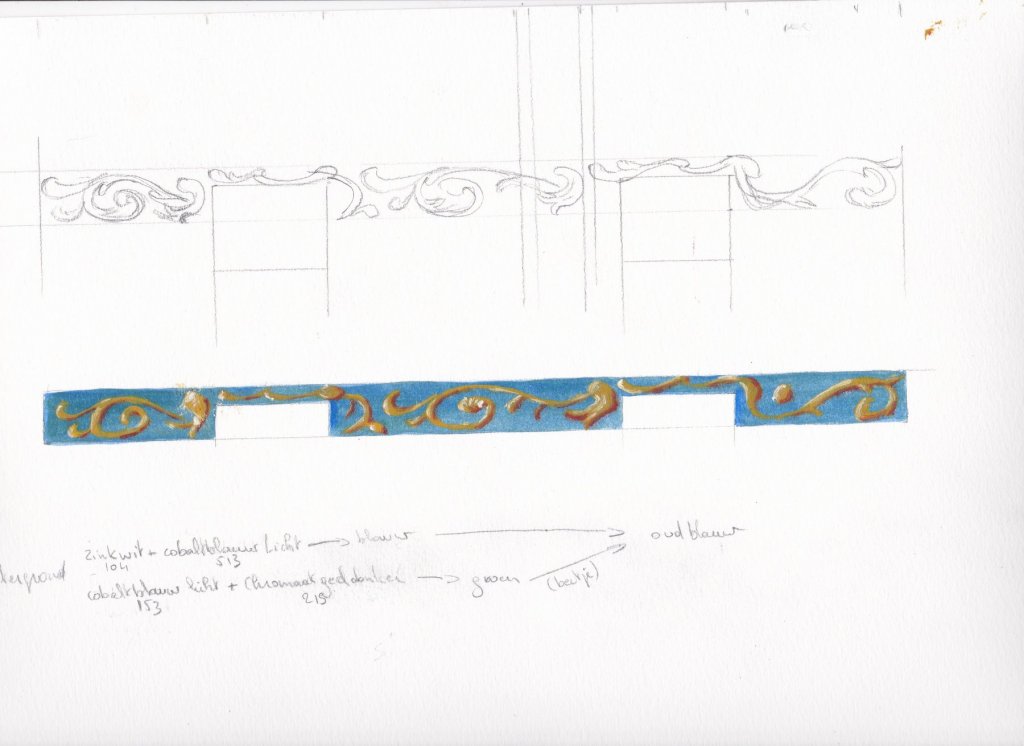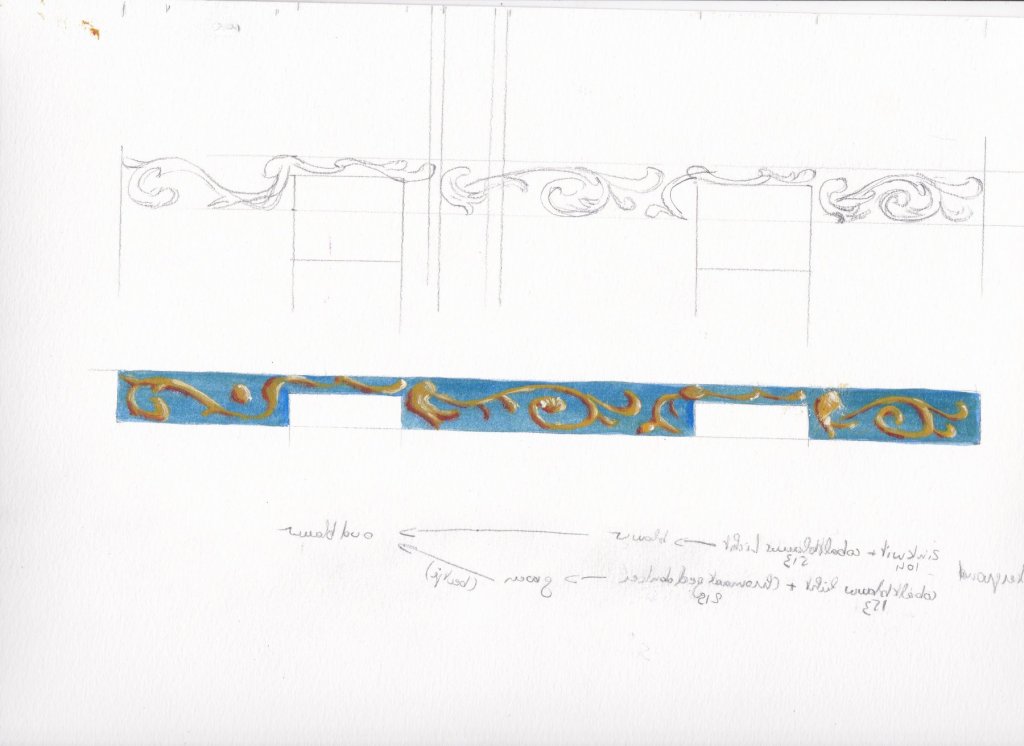-
Posts
1,553 -
Joined
-
Last visited
Content Type
Profiles
Forums
Gallery
Events
Posts posted by G.L.
-
-
Congratulations, Derek.
That was a smooth build. Your cross section looks very neat. Well done!
I enjoyed very much your companionship in this group project. Disregarding some dormant projects, I believe that I am now the only active builder left on the Triton cross section forum (gives me a somewhat lonely feeling).
Do you have already an idea for a following build?
G.L.
-
- AnobiumPunctatum, Canute, Derek C and 4 others
-
 7
7
-
-
I make first a design on paper. First in pencil to sketch a more simplified decoration than in the picture above.
Then I paint in oil paint to find the correct colors. The blue background in particular needs some experimenting before it is acceptable. I scan my design and print it in mirror image to have a layout for both sides.- AnobiumPunctatum, WBlakeny, Canute and 1 other
-
 4
4
-
- AnobiumPunctatum, mtaylor and Canute
-
 3
3
-
- aviaamator, WBlakeny, mtaylor and 2 others
-
 5
5
-
I thought about some solutions. Making a wood paste with sanding dust and varnish, etc... but I think it is better to fill the gaps with solid wood. So I make some thin planks in oak of which I sand a sharp side. I put some wood glue on the sharp side and knock it gently in the seams with a light hammer.
When the glue is dry I cut the excess of the planks away with a sharp chisel and sand it flush with the hull. There are still some gaps, but trust on it that they will fill with sanding dust when sanding between the varnish layers. -
Thank you Christian. Yes she is looking good, except for one thing: Between some planks gaps are appearing. While planking, the planks fitted together nicely, but now here and there they opened from each other. I think that the reason is that my workshop is not heated and I planked during winter in a rather cold and sometimes a bit dank workshop. After planking I kept my cross section in house where it is warm and dry so .... Some seams are a bit too wide (the frames are visual between the planks) to leave it as it is.
-
-
- mtaylor, mtbediz, Mirabell61 and 5 others
-
 8
8
-
16.5
I have built my hull in oak, the wood that was used to build the real shrimpers. I would like to keep the grain of the wood visible through the paint. Therefore I use oil paint like painters use to paint on canvas. My wife is going to the art school, so I find everything that I need in her painting box.
I use the paint strongly diluted with turpentine and to avoid that I have to wait several days before it is dry, I add some drips of siccative oil.
In the 19th century most of the fishing boats in our region were black tarred, I want obtain a color which closes as much a possible a tarred hull. Therefore I mix lampblack with kraplack red. 1/3 red and 2/3 black above the waterline, 2/3 red and 1/3 black below the waterline. Before the paint dries completely, I rub it up with a soft cotton rag to spread the color equally over the surface. -
-
-
-
-
-
-
-
-
-
According to me those railings look perfect. Well done!
G.L.
- mtaylor and John Allen
-
 2
2
-
- mtaylor, KeithAug, Captain Poison and 6 others
-
 9
9
-
-
- Mirabell61, DORIS, KeithAug and 4 others
-
 7
7





Half hull clippers 1845~1869 by rwiederrich - Finished
in - Build logs for subjects built 1801 - 1850
Posted
Very nice plaque, Rob. Well done!
G.L.